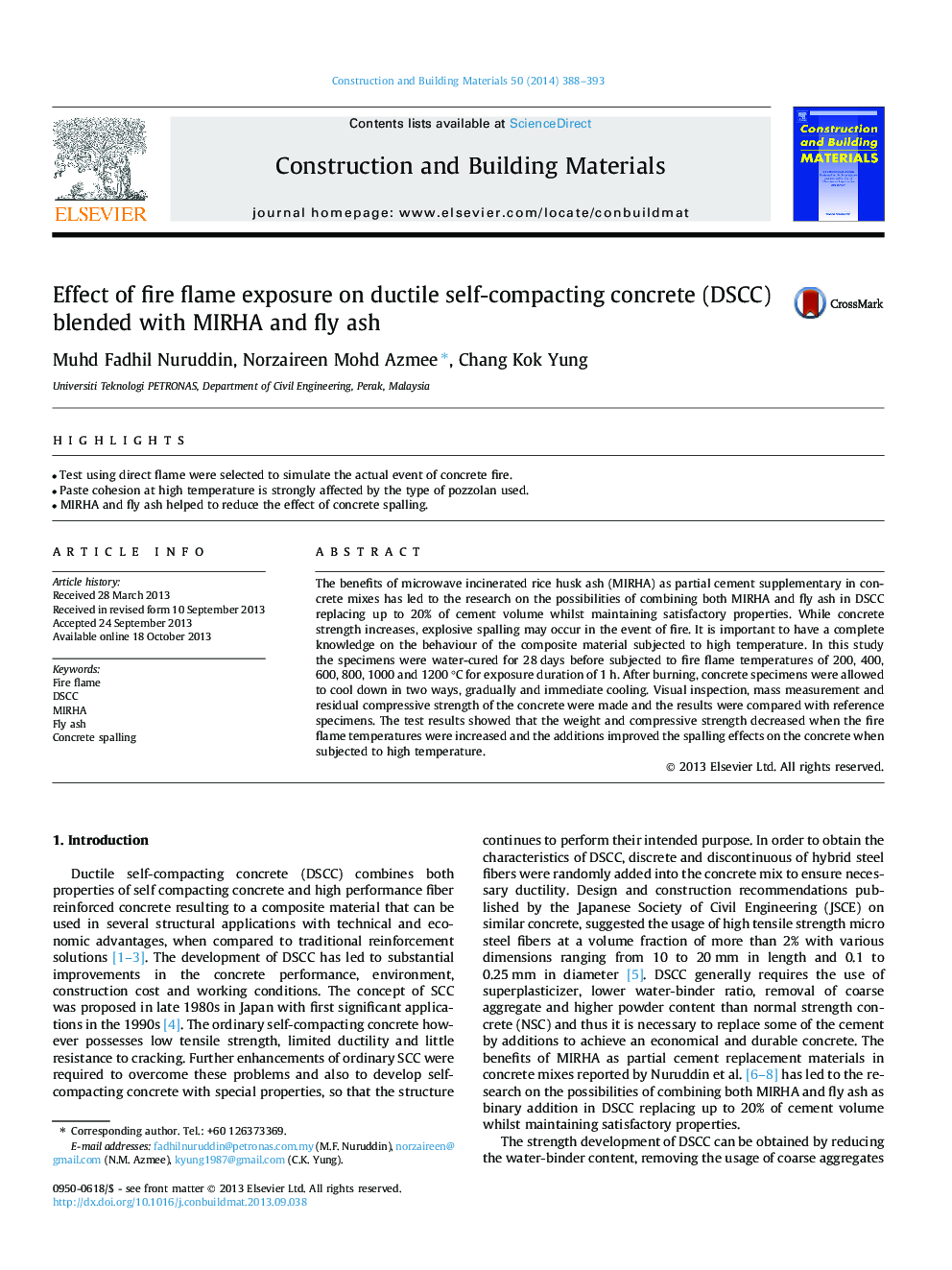| Article ID | Journal | Published Year | Pages | File Type |
|---|---|---|---|---|
| 257897 | Construction and Building Materials | 2014 | 6 Pages |
•Test using direct flame were selected to simulate the actual event of concrete fire.•Paste cohesion at high temperature is strongly affected by the type of pozzolan used.•MIRHA and fly ash helped to reduce the effect of concrete spalling.
The benefits of microwave incinerated rice husk ash (MIRHA) as partial cement supplementary in concrete mixes has led to the research on the possibilities of combining both MIRHA and fly ash in DSCC replacing up to 20% of cement volume whilst maintaining satisfactory properties. While concrete strength increases, explosive spalling may occur in the event of fire. It is important to have a complete knowledge on the behaviour of the composite material subjected to high temperature. In this study the specimens were water-cured for 28 days before subjected to fire flame temperatures of 200, 400, 600, 800, 1000 and 1200 °C for exposure duration of 1 h. After burning, concrete specimens were allowed to cool down in two ways, gradually and immediate cooling. Visual inspection, mass measurement and residual compressive strength of the concrete were made and the results were compared with reference specimens. The test results showed that the weight and compressive strength decreased when the fire flame temperatures were increased and the additions improved the spalling effects on the concrete when subjected to high temperature.
